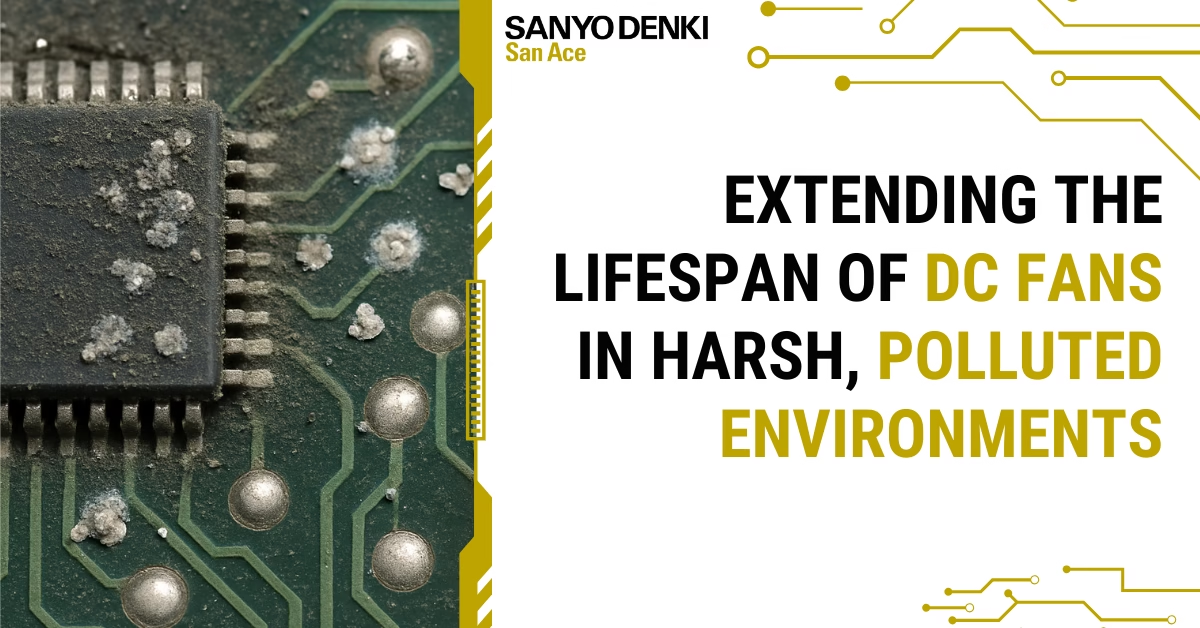Our DC fans are used in a wide range of applications worldwide. However, some are unexpectedly exposed to harsh environments with poor air quality, conditions not originally anticipated by system designers. Over time, such polluted environments can cause fan failures.
This article explains the issue and offers a straightforward solution to help extend the service life of DC fans operating in challenging conditions.
Understanding DC Fan Failures in Polluted Environments
While we provide specialised DC fans designed for harsh conditions such as wide temperature ranges, IP-rated, or long-life models, this article focuses on the use of our standard series fans in harsh environments.
Recently, two customers reported fan failures caused by air pollution and high humidity. Both used high-performance counter-rotating fans, typically found in telecoms, server, and data storage applications, which are usually installed in air-controlled environments.
Case Study 1: Installation in Asia
A system design that had been in production for approximately 13 years with no reported fan failures began experiencing issues when the customer installed units in an Asian country. Within a few years, fans started to fail. Failure analysis identified corrosion caused by pollution combined with high humidity. Corrosion damaged the solder joints connecting the lead wires to the PCB, eventually causing the power lead wire to disconnect.
Case Study 2: Installation in Southeast Asia
Similarly, another system in production for about 10 years experienced fan failures after installation in a Southeast Asian country. Corrosion was again found to be the cause, with metal PCB traces corroded and breaking electrical continuity.
Chemical analysis of dust accumulated on failed fans revealed high levels of chlorine (48%), potassium (25%), and calcium (21%). These elements, when combined with humidity, accelerate corrosion of metal components, leading to permanent fan failure.
Solution: Applying Conformal Coating to Protect DC Fans
A practical solution is to apply a conformal coating such as Pelgan Z, a silicone-based protective layer, on the fan PCB. This coating protects metal parts from corrosive chemicals and moisture, significantly reducing the risk of failure.
Applying this coating is a simple modification compatible with our standard fan series and does not affect fan performance, meaning no thermal requalification is necessary. Documentation is updated through revised drawings and lot/date code tracking.
Conclusion
High levels of air pollution combined with humidity increase the risk of fan and component failures within your systems. Although our standard fans do not require operation in a “clean room” environment, some preventative measures should be taken when used in polluted conditions.
If your design team has not accounted for these harsh environments, adding a conformal coating such as Pelgan Z to the fan PCB can enhance corrosion protection and extend the lifespan of your DC fans.
Take Your Fans to the Next Level
Discover how SANACE fans can improve precision, efficiency and reliability in your operations.
Click here to explore the full range through Motors and Fans.

